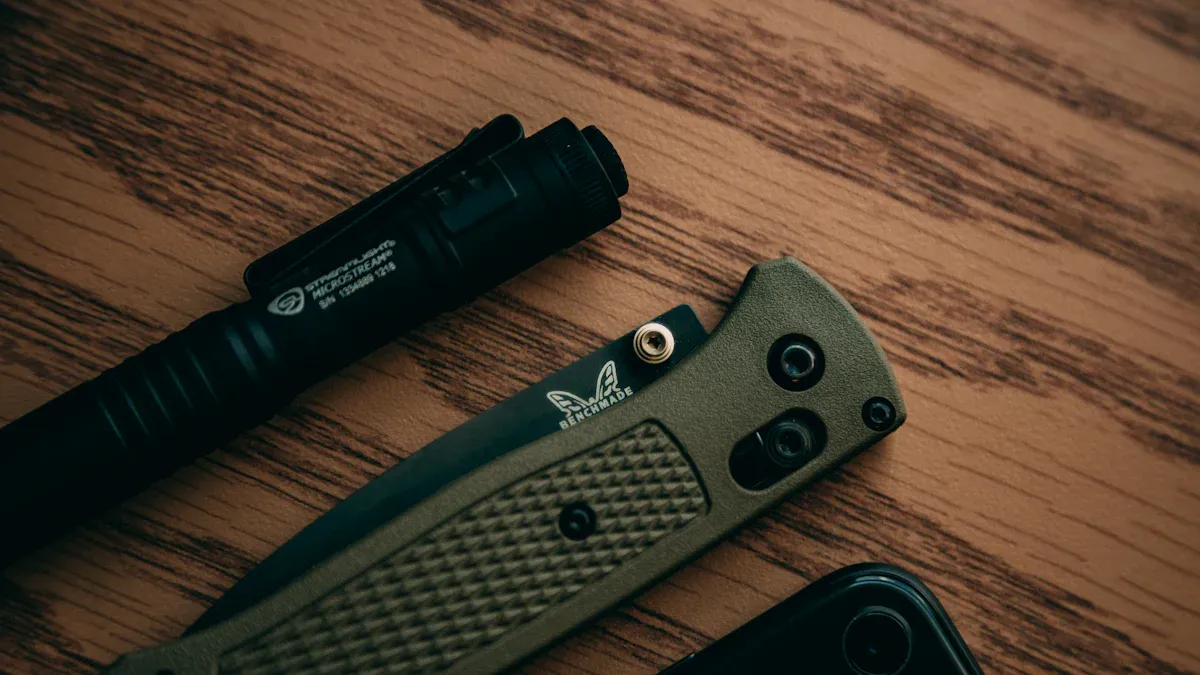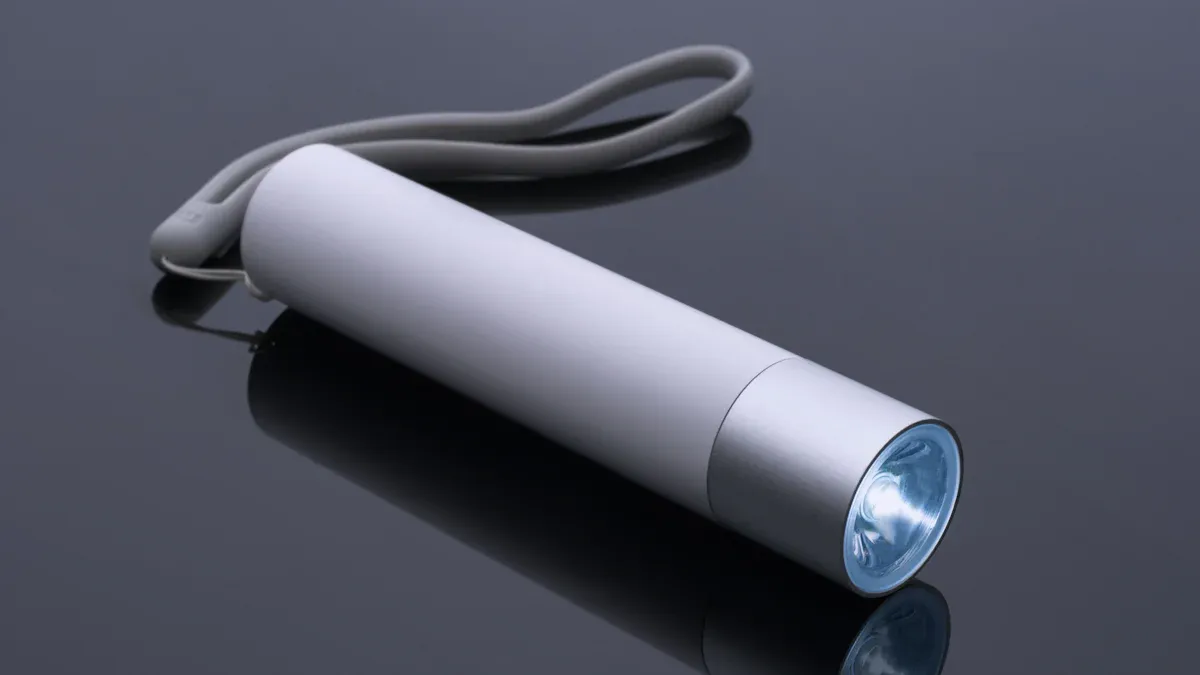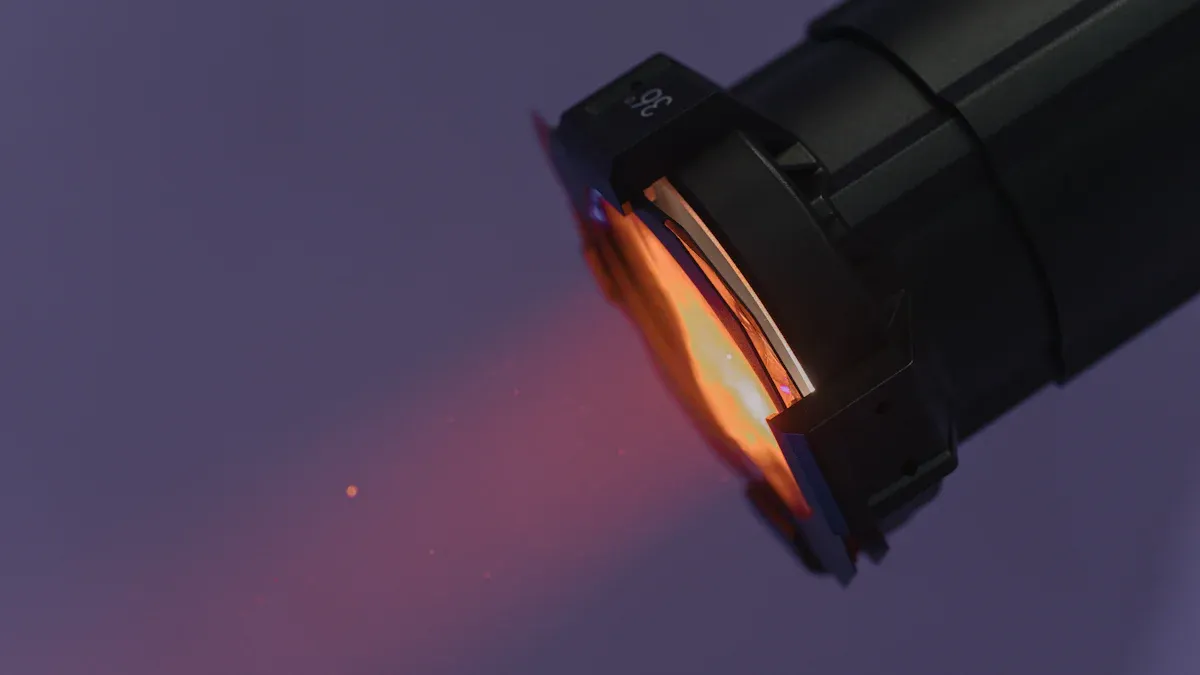Why Waterproof Flashlights Are Essential for Everyday Carry

Imagine being caught in a sudden downpour or navigating through a power outage with your Helius flashlight. Waterproof flashlights like the Helius ensure you always have reliable lighting, no matter the conditions. These flashlights are built tough, resisting rain, snow, and even impacts. Their waterproof design makes them essential for emergencies, outdoor adventures, and everyday use.
Key Takeaways
Waterproof flashlights work well in wet weather, keeping you safe in emergencies like blackouts or floods.
Strong materials make waterproof flashlights great for daily use. They can handle falls and tough conditions.
Knowing IP ratings helps you pick the right flashlight. This ensures it can handle the water it might face.
Benefits of Carrying Waterproof Flashlights

Reliability in Wet and Harsh Conditions
When you're caught in a sudden downpour or navigating through a flooded area, a waterproof flashlight becomes your best ally. Unlike standard flashlights that might flicker or fail, waterproof flashlights deliver consistent brightness even in the wettest conditions. Their sealed casings protect internal components, ensuring they stay functional when you need them most.
These flashlights are built to handle more than just water. Whether you're hiking in the rain, boating, or dealing with heavy snow, they maintain visibility and reliability. You won't have to worry about your flashlight giving up on you during critical moments. This makes them ideal for outdoor enthusiasts and anyone who values preparedness.
Tip: Look for flashlights with high IP ratings to ensure maximum protection against water and dust.
Durability for Long-Term Everyday Use
Waterproof flashlights are designed to last. Their rugged construction, often made from corrosion-resistant materials like anodized aluminum, ensures they can withstand drops, impacts, and harsh environments. This durability makes them perfect for EDC (everyday carry) since they can handle the wear and tear of daily use.
Manufacturers put these flashlights through rigorous testing to ensure they perform in real-world conditions. Whether it's rain, fog, or snow, you can count on them to work consistently. Plus, their waterproof design prevents rust and internal damage, extending their lifespan. If you're looking for the best EDC flashlight, durability should be at the top of your checklist.
Safety and Peace of Mind in Emergencies
Emergencies can strike at any time, and having a reliable flashlight can make all the difference. Waterproof flashlights shine in situations like power outages, floods, or heavy rains. They remain functional even when submerged, giving you peace of mind during chaotic moments.
Imagine navigating through a dark, flooded basement or signaling for help during a storm. A waterproof flashlight ensures you're prepared for the unexpected. Its ability to withstand harsh conditions makes it an essential tool for safety and survival. Whether you're at home, outdoors, or on the go, this is one piece of gear you don't want to leave behind.
Everyday Scenarios for Waterproof Flashlights

Emergencies Like Power Outages or Floods
You never know when an emergency will strike. Waterproof flashlights are lifesavers in situations like power outages, storms, or even flooded areas. Unlike regular flashlights, these are built to handle wet conditions without losing functionality. Whether you're navigating a dark house during a blackout or dealing with heavy rains, they provide consistent brightness to keep you safe.
Here are some common emergency scenarios where waterproof flashlights prove essential:
Power outages leave you in complete darkness.
Flooded basements or streets require reliable lighting.
Heavy rains or natural disasters demand durable tools.
Roadside breakdowns in bad weather need visibility.
Pro Tip: Keep a waterproof flashlight in your car or emergency kit for unexpected situations. It’s a small step toward better emergency preparedness.
Outdoor Adventures: Camping, Hiking, and More
Outdoor activities often come with unpredictable weather. A waterproof flashlight is your best companion for adventures like camping, hiking, or fishing. It ensures you’re ready for sudden rain or wet conditions.
Here’s how waterproof flashlights shine outdoors:
Camping and hiking trips often face unexpected rain. These flashlights keep your path lit.
Fishing and boating require tools that can handle water exposure.
Search and rescue missions rely on durable, high-visibility flashlights in challenging environments.
Whether you’re exploring a forest or casting a line by the lake, a waterproof flashlight ensures you’re never left in the dark. It’s a must-have for any outdoor enthusiast.
Urban Use During Rainy or Unexpected Weather
Urban environments can be just as unpredictable as the wilderness. Rainy days or sudden storms can make navigating the city tricky. Waterproof flashlights enhance your safety by providing reliable lighting in these situations.
Dimly lit streets or flooded areas can hide hazards like uneven sidewalks or obstacles. A waterproof flashlight helps you avoid these dangers. It also comes in handy for signaling for help during emergencies. Whether you’re walking home in the rain or dealing with a power outage in your apartment, this tool ensures you’re prepared for anything.
Note: An EDC flashlight with waterproof capabilities is perfect for urban use. It’s compact, durable, and ready for any weather.
Key Features of a Waterproof Flashlight
Understanding IP Ratings
When choosing waterproof flashlights, you’ll often see something called an IP rating. This rating tells you how well the flashlight can resist water and dust. The second digit in the IP rating is especially important for waterproof flashlights. It shows how much water exposure the flashlight can handle. For example, a flashlight with an IPX4 rating can resist splashes, while one with an IPX8 rating can survive full submersion.
Understanding these ratings helps you pick the right flashlight for your needs. If you’re planning outdoor adventures or need a reliable EDC flashlight for emergencies, go for a higher IP rating. It ensures your flashlight stays functional even in heavy rain or underwater situations.
Tip: Always check the IP rating before buying a flashlight. It’s a quick way to know how waterproof it really is.
Build Quality and Materials
The materials used in waterproof flashlights play a huge role in their durability. High-quality EDC lights often use materials like:
Acrylonitrile Butadiene Styrene (ABS): Durable and resistant to chemicals, perfect for flashlight housing.
Aluminum Alloy: Lightweight and great at preventing overheating.
Stainless Steel: Strong and corrosion-resistant, ideal for harsh conditions.
Titanium: Premium material with excellent strength and corrosion resistance.
These materials ensure your flashlight can handle drops, impacts, and tough environments. If you want a flashlight that lasts, look for one made from aluminum or titanium. They’re lightweight yet strong, making them perfect for everyday carry.
Battery Life and Power Options
Battery life is another key feature to consider. Waterproof flashlights often come with long-lasting batteries to ensure they’re ready when you need them. Some models even offer rechargeable options, which are both eco-friendly and cost-effective.
When deciding how bright should an EDC flashlight be, think about its power source. A high-quality EDC light with adjustable brightness settings can save battery life while giving you the right amount of light for any situation. Whether you’re using it for emergencies or outdoor activities, a flashlight with reliable battery life is a must-have.
Tips for Maintaining Waterproof Flashlights
Cleaning and Drying After Use
Keeping your waterproof flashlight clean ensures it stays in top condition. After each use, follow these steps to maintain its performance:
Remove the batteries to prevent accidental activation.
Wipe the exterior with a soft, lint-free cloth or a slightly damp cloth. Avoid using abrasive materials or harsh chemicals.
Clean the threads of the battery compartment and apply a thin layer of silicon-based lubricant.
Use a microfiber cloth or lens cleaning solution to gently clean the lens.
Inspect the battery compartment for debris or corrosion and clean it if necessary.
These simple steps will keep your flashlight looking and working like new.
Tip: Always dry your flashlight thoroughly after cleaning to prevent moisture from affecting its internal components.
Checking Seals and O-Rings
The seals and O-rings are what make your flashlight waterproof. Regularly inspect them to ensure they’re in good shape. Look for cracks, wear, or dirt that could compromise the seal. If you notice any damage, replace the O-rings immediately.
Applying a small amount of silicon-based lubricant to the O-rings can help maintain their flexibility and effectiveness. This keeps your flashlight ready for any wet or harsh conditions.
Note: Damaged seals can lead to water leakage, so don’t skip this step!
Proper Storage for Longevity
Storing your waterproof flashlight correctly can extend its lifespan. Keep it in a cool, dry place to protect it from moisture and extreme temperatures. Use a protective case or pouch to shield it from dust and impacts.
Avoid exposing your flashlight to direct sunlight or extreme heat, as this can damage its internal components. Removing the batteries when not in use also prevents corrosion and ensures your flashlight is ready when you need it.
Pro Tip: A little care goes a long way. Proper storage keeps your flashlight reliable for years to come.
Waterproof flashlights, like the helius flashlight, are more than just tools—they’re your dependable companions in any situation. Whether you’re braving a storm, exploring the outdoors, or dealing with a sudden power outage, these flashlights deliver unmatched reliability. Investing in a high-quality option, such as the Fenix PD36R or SureFire G2X Pro, ensures you’re prepared for years to come. With features like extended battery life, durable construction, and comprehensive warranties, these flashlights offer peace of mind and long-term value. Don’t wait for an emergency to realize their importance—make one part of your everyday carry today.
FAQ
What does an IP rating mean for waterproof flashlights?
The IP rating shows how well a flashlight resists water and dust. Higher numbers mean better protection. For example, IPX8 handles submersion, while IPX4 resists splashes.
Tip: Always check the IP rating before buying to match your needs!
Can waterproof flashlights survive being dropped in water?
Yes, most can! Flashlights with IPX7 or IPX8 ratings can handle submersion. Just ensure the seals and O-rings are intact for maximum protection.
How often should I check my flashlight’s seals?
Inspect the seals and O-rings every few months or after heavy use. Damaged seals can compromise waterproofing, so replace them if you notice cracks or wear.
Pro Tip: Apply silicone lubricant to keep seals flexible and effective.
See Also
Discover Your Ideal Flashlight for Daily Use
Our Emergency Flashlight: Designed for Long-Lasting Durability
Essential LED Flashlights for Every Household Need
Key Guidelines for Proper Flashlight Care and Maintenance
Understanding How Diving Flashlights Differ from Standard Ones
